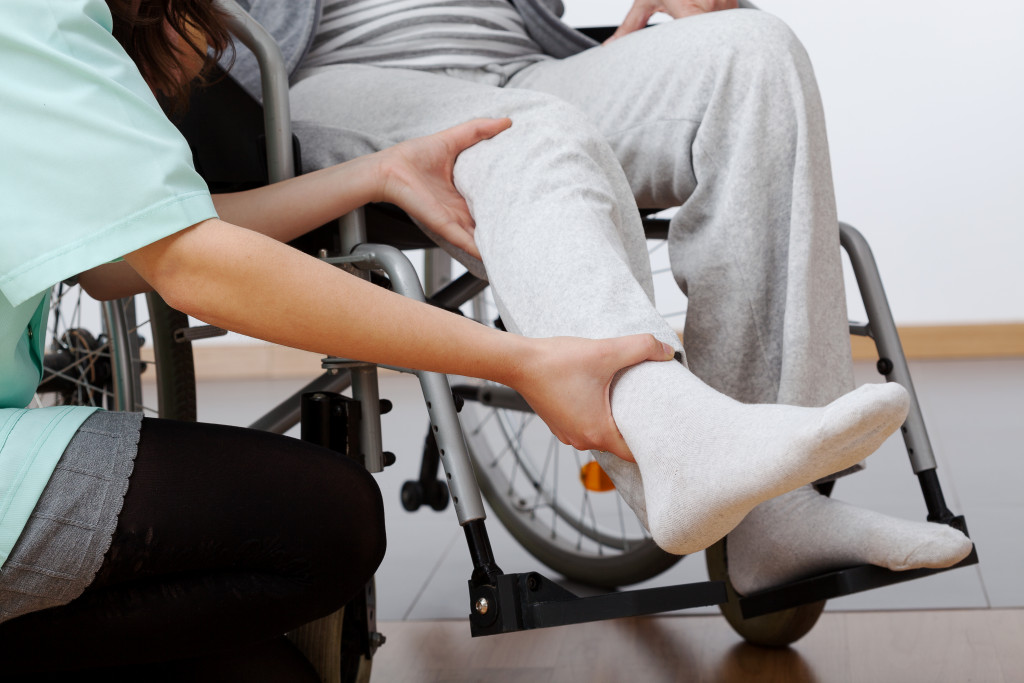- Rehabilitation is critical for athletes to recover from sports injuries and return to their peak performance.
- Early intervention, proper diagnosis, and professional chiropractic care are necessary to ensure successful rehabilitation.
- Physical therapy exercises, pain management strategies, and injury-specific protocols are used in rehabilitation.
- A gradual progression of activities must be implemented with sufficient rest periods in between while monitoring progress accurately.
- Psychological support and motivation are also essential components for a successful recovery journey.
Injuries are a part of every athlete’s life, whether mild, moderate, or severe. It can be frustrating, leading to a significant negative impact on their performance. However, the good news is that with proper rehabilitation techniques, athletes can quickly recover from sports injuries and get back to their peak performance.
Rehabilitation post-sports injury is critical to ensure athletes can return to the field as soon as possible. Rehabilitation plays a vital role in restoring the injured body part and its surrounding structures to their original function and mobility.
Proper rehabilitation techniques help decrease swelling and pain, improve range of motion, and increase muscle strength. Moreover, it also helps prevent re-injury risk by improving balance, neuromuscular function, and sport-specific movements.
This article will examine the importance of rehabilitation in sports injury recovery and the techniques that can be implemented for faster recovery.
Rehabilitation Principles
Several rehabilitation principles must be followed to recover from a sports injury. These principles include:
Early Intervention
Early intervention after a sports injury is critical to speed up recovery. Starting rehabilitation exercises as soon as possible helps maintain joint range of motion and minimize loss of muscle strength.
Early intervention also helps to restore coordination, balance, and neuromuscular function, making re-injuries less likely.
Proper Diagnosis
Proper diagnosis is the first step toward rehabilitation. It’s essential to identify the root cause of the injury and the damage it has caused. The correct diagnosis allows for the implementation of the right rehabilitation techniques.
In addition, proper diagnosis ensures that the rehabilitation program meets the athlete’s specific needs, enabling a faster and more effective recovery.
Professional Chiropractic Care
Chiropractic care is a non-invasive, drug-free approach to sports injury recovery. Chiropractors are trained professionals who work on the body’s structure and function to promote self-healing. Chiropractors use various techniques, including spinal adjustments, soft tissue mobilization, and therapeutic exercises.
A professional chiropractic care will help restore normal spinal movement and regain joint mobility and muscle strength. With chiropractic care, athletes recover from their sports injuries naturally, without needing medication or surgery.
Rehabilitation Techniques
There are a variety of rehabilitation techniques that can be used to help recover from sports injuries. Some of the most common methods are physical therapy exercises and techniques, pain management strategies, and injury-specific rehabilitation protocols.
Physical Therapy Exercises and Techniques
Physical therapy exercises and techniques are designed to help athletes regain strength, flexibility, and range of motion. These exercises can include stretching, resistance training, and balance and coordination exercises.
Physical therapists may also use heat, ice, or electrical stimulation to promote healing and reduce pain.
Pain Management Strategies
Pain management strategies are used to help athletes manage their pain during the recovery process. This can include techniques such as ice or heat therapy, massage, and non-steroidal anti-inflammatory drugs (NSAIDs).
Pain management strategies can help athletes stay comfortable while they recover and prevent further injury.
Injury-Specific Rehabilitation Protocols
Injury-specific rehabilitation protocols are designed to help athletes recover from specific injuries.
These protocols may include exercises and techniques to reduce pain and inflammation, restore range of motion, and strengthen the affected area. Injury-specific rehabilitation protocols are tailored to the individual athlete and their specific injury.

Recovery and Return to Sport
Injured athletes undergo a long and painful process of recovery involving a combination of rest, rehabilitation, and therapy. The rehabilitation process usually starts with the R.I.C.E (Rest, Ice, Compression, and Elevation) method.
Once the swelling and inflammation reduce, restoring flexibility, range of motion, and strength of the injured area is essential.
Gradual Progression of Activities
After an injury, athletes may get back to their sport too quickly, leading to re-injury or new injury. Consequently, a gradual progression of activities must be implemented into their rehab program.
This involves the steady increase of intensity, duration, and frequency of exercises, with sufficient rest and recovery periods in between. Once athletes feel comfortable performing activities at a particular level, they can progress to the next level.
Monitoring Progress and Adjusting the Rehabilitation Plan
Rehabilitation techniques are not a one size fits all approach. Injuries and the severity of each injury are different. Measuring the athlete’s progress accurately is essential to improve the rehab process.
Periodic assessments made through exercises and tests are necessary to monitor progress. The success of rehabilitation is measured by the progress made by the athlete during the recovery process.
Psychological Support and Motivation
Apart from physical recovery, psychological support, and motivation are increasingly becoming critical in rehabilitating athletes from injuries. During rehabilitation, an individual may go through phases of depression, anxiety, and other psychological barriers.
Hence, mental health must be considered a vital part of rehabilitation. Encouragement, positive reinforcement, and a positive attitude will go a long way in helping an athlete return to sport.

In conclusion, rehabilitation is the key to faster and more effective sports injury recovery. Early intervention, proper diagnosis, and professional chiropractic care can help athletes recover from their injuries and improve their performance.
It’s vital to understand that rehabilitation is not just about healing the injury; it’s also about improving function and preventing re-injuries. You can quickly recover, regain balance and neuromuscular function, and return to peak performance with the proper rehabilitation techniques.
